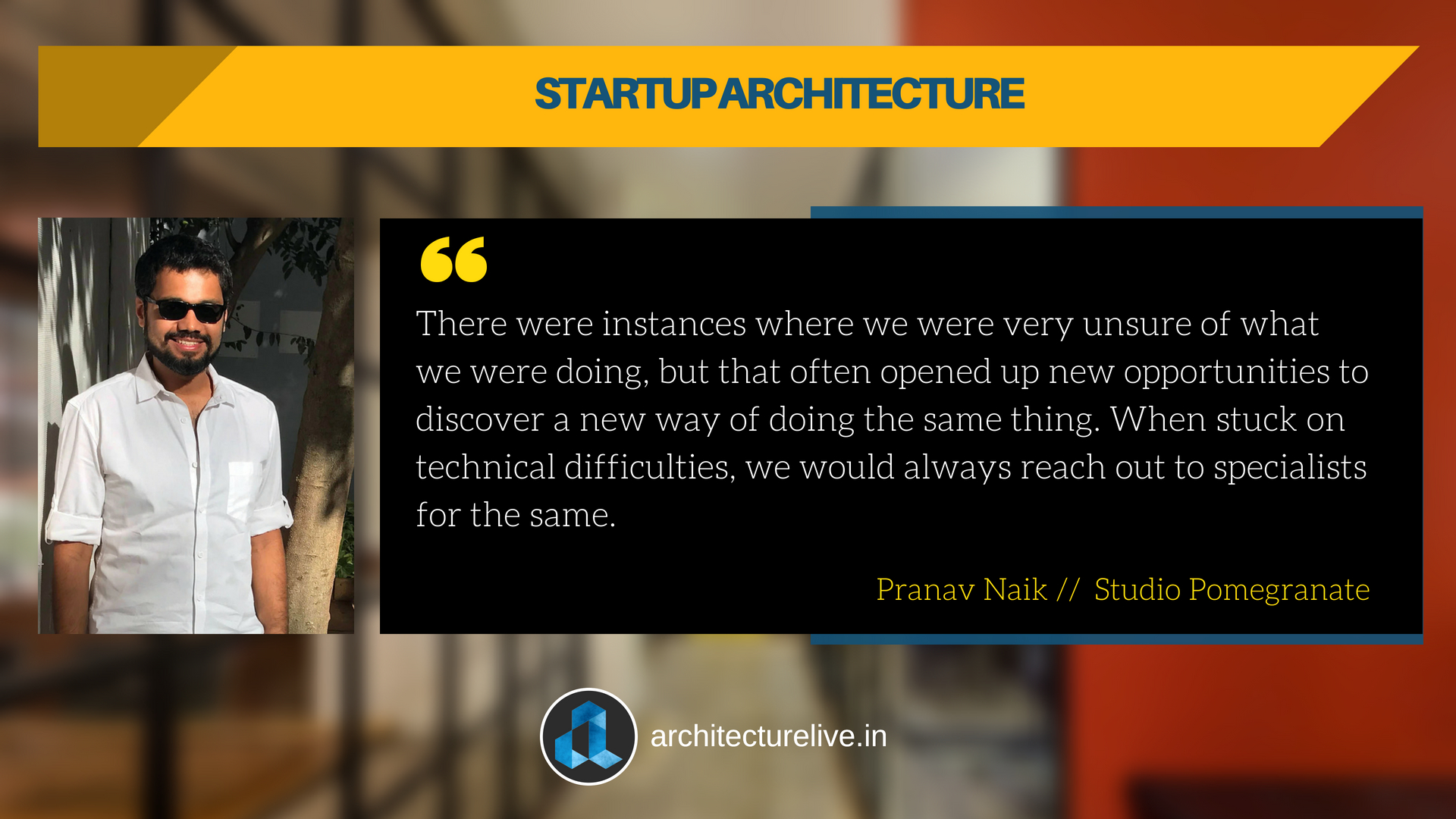“I knew I wanted to start my own practice, before I even graduated from architecture school. I never focused on projects lost or difficulties faced. Every difficulty became an opportunity to learn. To start a practice, you have to be intentional about it, unwavering. “
Pranav Naik weighs in on the subject matter of the implications of starting your own practice. Along with Shweta Chhatpar, he set up Studio Pomegranate in 2013; which is persistently exploring opportunities and potential for integrated collaborative design.
[bs-quote quote=”There were instances where we were very unsure of what we were doing, but that often opened up new opportunities to discover a new way of doing the same thing. When stuck on technical difficulties, we would always reach out to specialists for the same.” style=”default” align=”left” author_name=”Pranav Naik” author_job=”Studio Pomegranate” author_avatar=”https://architecture.live/wp-content/uploads/2018/06/Pranav-Naik2-e1529723251121.jpg”][/bs-quote]
Pranav brings in a fresh perspective to the premise. Starting your own practice is not just about overcoming the obstacles but converting the obstacles into opportunities for personal and professional growth. His stance on the subject concisely explains the right attitude for venturing out.
“I always wanted to have my own practice. I really wanted it. In fact, I started my own private design practice right after my third year in Architecture School.”
He reminisces, “I had not particularly named it anything, but would have various cards with my name printed on them for the means of networking and for potential clients to be able to contact me. At that time, I was working on a space for a diamond Jewelry Factory for Shrikant Sathe of Master, Sathe and Kothari. Soon, I found more clients who wanted me to design spaces for them, I spent a good part of that academic year doing these projects. Shweta was my classmate then, she would occasionally help me with projects. I would also incorporate graphic design assignments to earn extra money.”
He adds, “Although we had intended to start our practice two years before graduation, the genesis of Studio Pomegranate was not until 2013.” Pranav further comments on how starting your own practice is always a challenge but he then counters; suggesting that it would not be worth cherishing if it wasn’t!
“We ensure that we take projects we do not know how to entirely develop, we take it further as a personal challenge to invent or reinvent as we progress. We assimilate knowledge in this manner, to justify our aspirations to be better. He adds, “We also have several specialists whose expertise help us instrument better architecture. I personally believe we should never shy away from asking help, as an entrepreneur and as an architect you will always need a network of people to assuage you – be in the form of experts, architecture mentors, architects or friends.”
Given that starting your own practice initially brings in difficulties in the form of project management, business management and obtaining good projects for work, it becomes essential to rise to the challenge.

He says, “The first project we did after establishing our firm was a pedestrian walkway at Prabhadevi. We really put in all our efforts. The walkway got several recognitions from national newspapers all week. It was a first of its kind of project and evinced interest from everywhere” he continues, “After which other clients contacted us for projects. Although this was the case, there were and will be periods where we won’t be getting enough projects. So, we would then focus our energy on research and designing for ourselves.”
Pranav says that there were moments where we stumbled, times where things were terrifying. In those periods, the key was to remind oneself how much you want this and to believe in yourself.
There were instances where we were very unsure of what we were doing, but that often opened up new opportunities to discover a new way of doing the same thing. When stuck on technical difficulties, we would always reach out to specialists for the same.
He further exemplifies; “I have been lucky to have friends I could always reach out to for help. Further inspirations such as F L. Wright, Geoffrey Bawa, The Ellora caves always motivated me to evolve as an architect.”
“Be intentional, don’t be afraid and never give up.”
click here to read more stories about starting architectural practice







